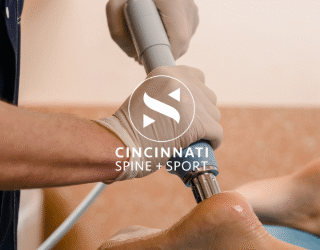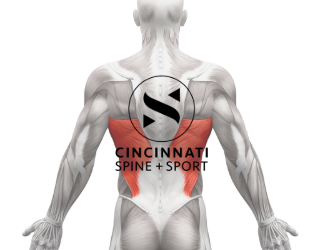Plantar fasciitis is one of the most common causes of heel pain, affecting athletes and non-athletes alike. It occurs when the plantar fascia—a thick band of tissue that connects your heel bone to your toes—becomes inflamed or irritated. This condition can result in significant discomfort, especially during the first steps in the morning or after periods of inactivity.
Fortunately, there are effective ways to address plantar fasciitis through therapeutic techniques and targeted rehabilitation exercises. At Cincinnati Spine and Sport, we use advanced modalities like Active Release Technique (ART), dry needling, and rehabilitation exercises with an emphasis on eccentric loading to help patients recover and prevent future flare-ups.
What Causes Plantar Fasciitis?
Plantar fasciitis often develops due to:
- Overuse or repetitive stress, common in runners and those who stand for long periods.
- Poor footwear lacking arch support or cushioning.
- Tight calf muscles or Achilles tendon, which increase tension on the plantar fascia.
- Sudden increases in activity level or workload.
This excessive stress can cause microtears in the fascia, leading to pain and inflammation. Without proper treatment, this condition may persist and limit your ability to move comfortably.
How Therapists Treat Plantar Fasciitis
Therapists use a combination of techniques to alleviate pain, promote healing, and restore function. Here’s how each modality works:
- Active Release Technique (ART)
ART focuses on breaking up adhesions and scar tissue that develop in the soft tissues of the foot and calf. By targeting the specific areas of restriction, ART improves tissue mobility and blood flow, reducing tension on the plantar fascia. During an ART session, the therapist applies precise pressure while moving the affected area through its range of motion. This hands-on approach helps restore flexibility and function, providing significant pain relief. - Dry Needling
Dry needling involves inserting thin needles into trigger points or tight areas of muscle to release tension and reduce pain. For plantar fasciitis, dry needling can be applied to the plantar fascia itself and related muscles, such as the calves and the intrinsic foot muscles. This technique stimulates blood flow, accelerates tissue healing, and relaxes overactive muscles, all of which help reduce strain on the plantar fascia. - Rehabilitation Exercises with Eccentric Loading
Rehab exercises are a cornerstone of effective plantar fasciitis treatment. Specifically, eccentric loading exercises have been shown to improve the plantar fascia’s tolerance to stress and workload. Eccentric exercises involve lengthening the muscle under tension. For plantar fasciitis, this might include:- Heel Drops: Standing on the edge of a step, slowly lower your heels below the step while maintaining control.
- Toe Extension Stretches: Sitting with one leg crossed over the other, gently pull your toes back to stretch the plantar fascia.
- Calf Raises: Slowly raise your heels off the ground and lower them back down in a controlled manner.
Why Eccentric Loading is Essential
Eccentric loading is particularly effective for plantar fasciitis because it:
- Promotes collagen remodeling, helping the tissue heal stronger and more resilient.
- Increases flexibility in the surrounding structures, reducing strain on the fascia.
- Enhances the fascia’s capacity to handle daily and athletic activities, preventing re-injury.
When paired with manual therapies like ART and dry needling, these exercises create a comprehensive approach to recovery.
Take Steps Toward Pain-Free Movement
Plantar fasciitis can be a stubborn and painful condition, but with the right treatment plan, relief is within reach. At Cincinnati Spine and Sport, we specialize in combining innovative techniques with targeted rehabilitation exercises to address the root cause of your pain and improve your overall function.
If you’re struggling with heel pain, don’t wait to seek help. Contact us today to learn how our expert team can help you overcome plantar fasciitis and get back to doing what you love!
Follow us for more tips on overcoming common injuries and optimizing your movement!





